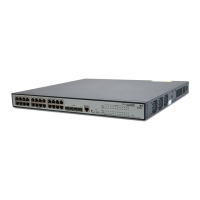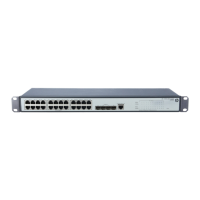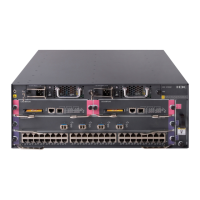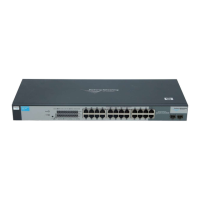Device class
The device class advertised by the local device:
Connectivity device—An intermediate device that provide network connectivity.
Class I—A generic endpoint device. All endpoints that require the discovery
service of LLDP belong to this category.
Class II—A media endpoint device. The class II endpoint devices support the
media stream capabilities in addition to the capabilities of generic endpoint
devices.
Class III—A communication endpoint device. The class III endpoint devices
directly support end users of the IP communication system. Providing all
capabilities of generic and media endpoint devices, Class III endpoint devices
are used directly by end users.
Return to LLDP configuration task list.
Displaying LLDP information received from LLDP neighbors
Select Network > LLDP from the navigation tree and click the Neighbor Summary tab to display the LLDP
neighbor information, as shown in Figure 195.
Figure 195 The Neighbor Summary tab
Return to LLDP configuration task list.
LLDP configuration examples
Basic LLDP configuration example
Network requirements
As shown in Figure 196, the NMS and Switch A are located in the same Ethernet network. Switch A is
connected to a MED device and Switch B through ports GigabitEthernet 1/0/1 and GigabitEthernet
1/0/2, respectively.
Enable LLDP on the ports of Switch A and Switch B to monitor the link between Switch A and Switch B and
the link between Switch A and the MED device on the NMS.
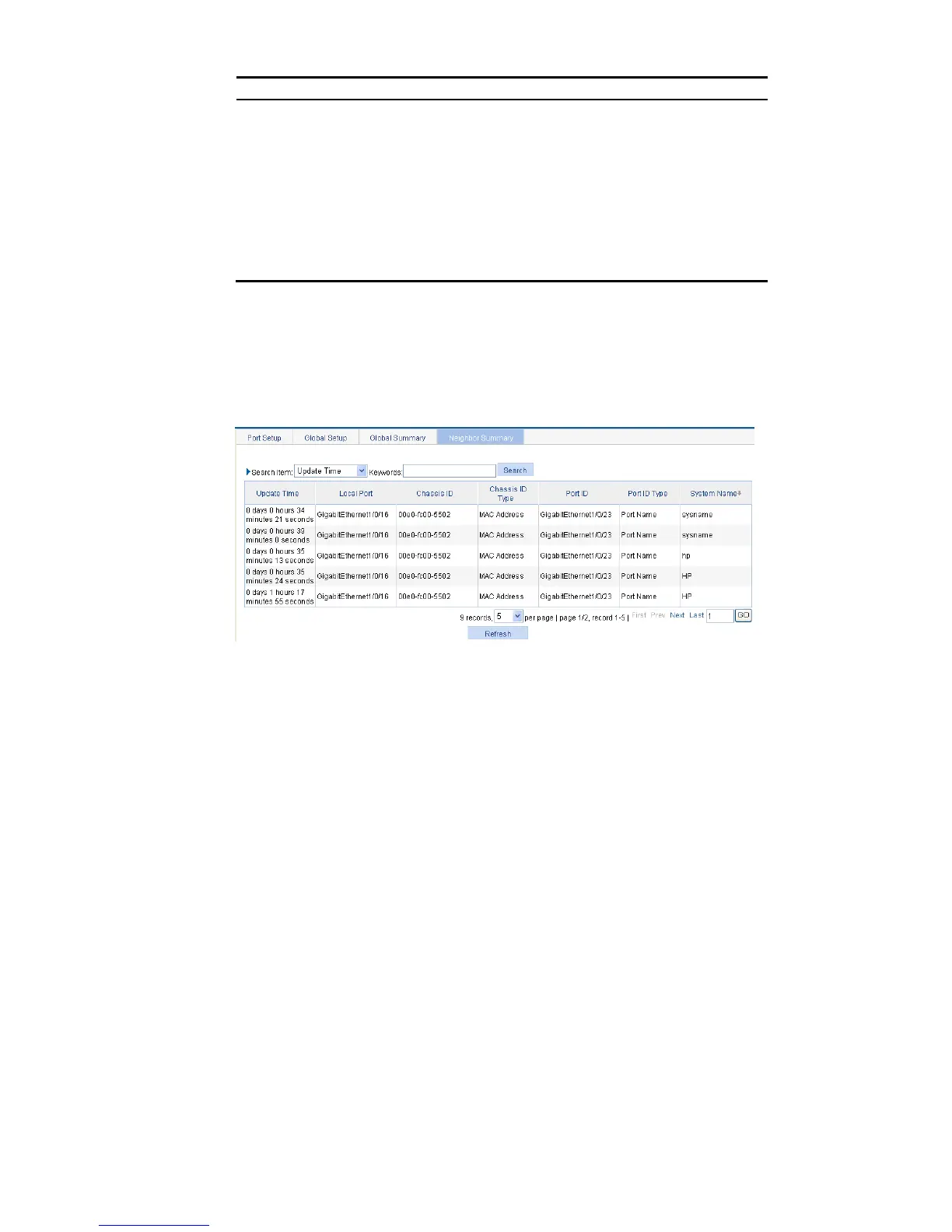